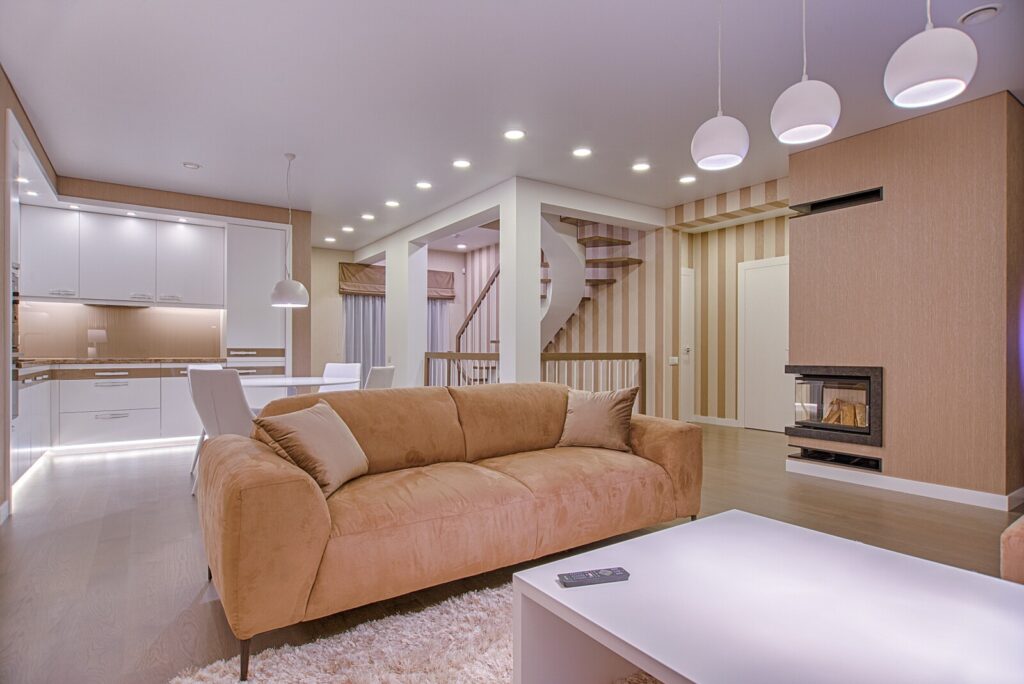Lighting Fixtures for the Kitchen: What You Need to Know
When you enter your kitchen, what’s the first thing that catches your eye? Is it the gleaming granite countertops? The newly painted cupboards? Or the bright and beautiful light fixtures hang over your sink or island. Choosing the proper kitchen lighting is critical in any renovation or new design project, as proper illumination will set off other features within your space. So – where do you start when looking for the best lighting solutions for kitchens? Read on to discover some pro tips on selecting light fixtures that are both stylish and functional in this indispensable guide!
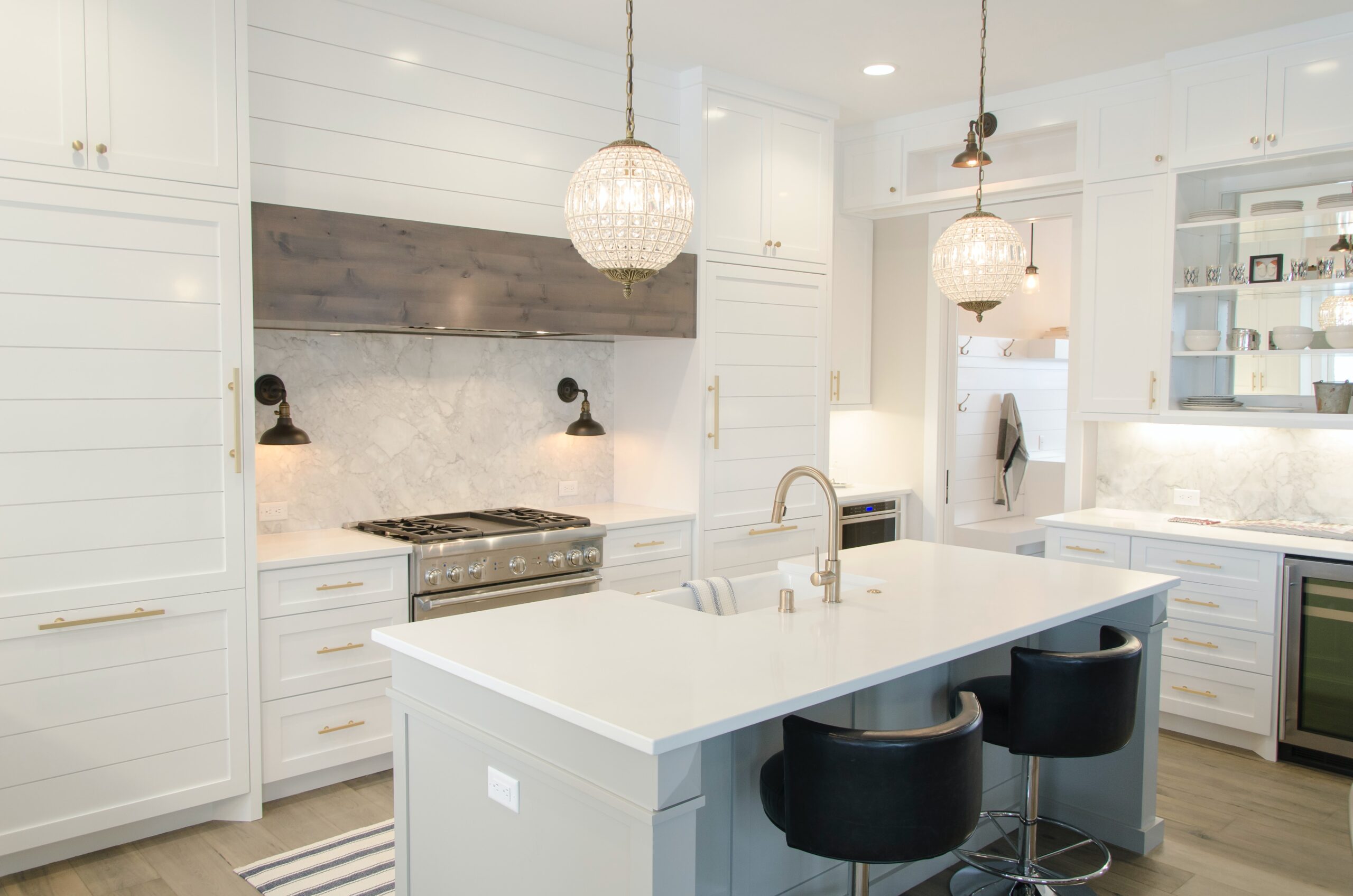
How to Choose the Best Light Fixtures For Your Kitchen
Introducing the Four Layers of Kitchen Lighting
When it comes to kitchen lighting, one size does not fit all. Multiple light layers are essential for ambient, task, and accent lighting. Layering different types of lighting will provide the flexibility needed in your kitchen space. Ambient lighting helps to set the mood, while task lighting ensures you can perform various tasks like chopping, cooking, or cleaning safely. Finally, accent lighting highlights vital features in your kitchen decor and brings them to life. By understanding the four layers of kitchen lighting – ambient, task, accent, and decorative – you can create a functional yet stylish look to complete your unique space.
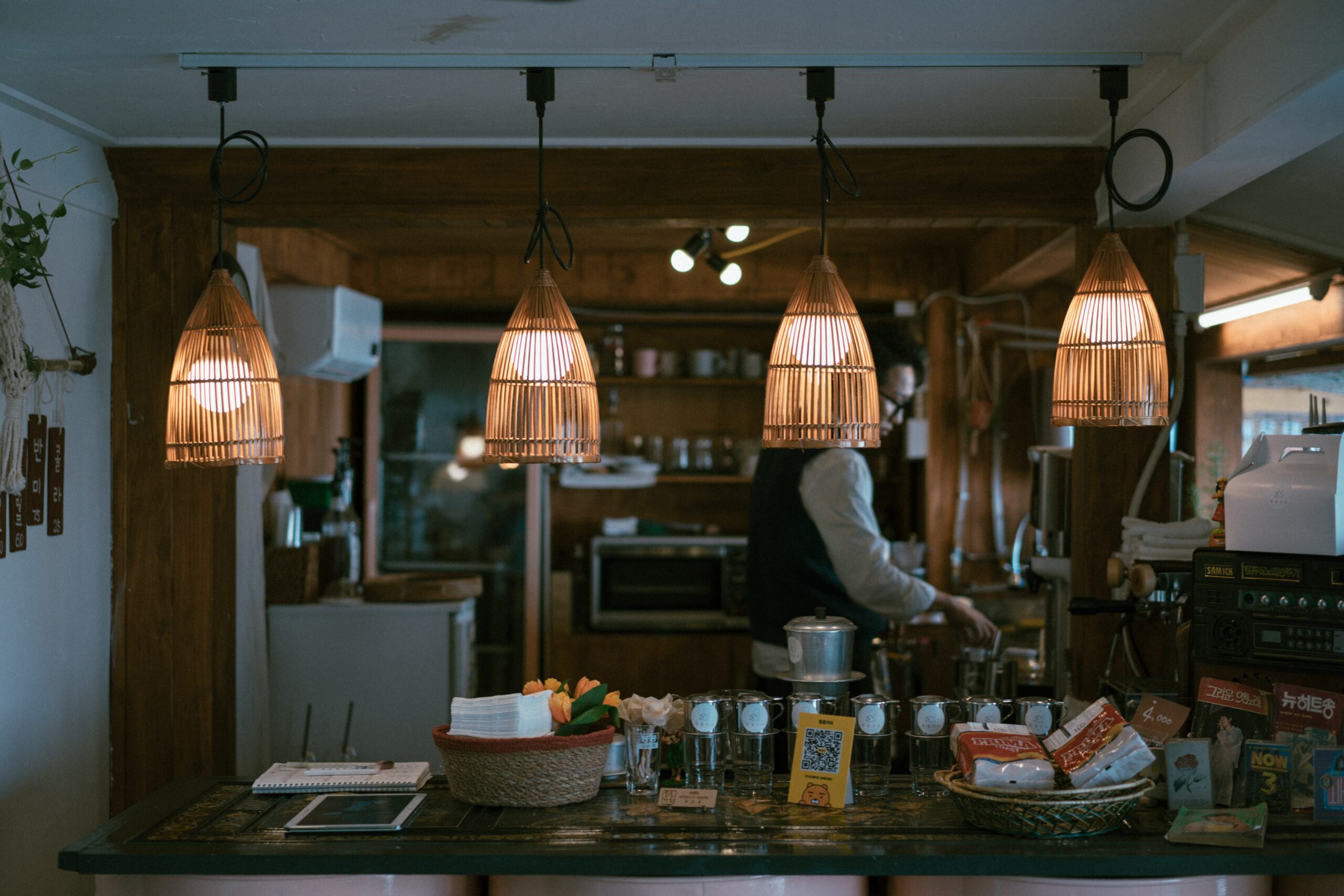
Introducing the Four Layers of Kitchen Lighting
- Layer One – Natural Lighting
Natural lighting is an essential element of any design project and is the first layer of light to consider. Its potential should always be considered, as even a tiny amount of daylight can produce a powerful layout. When it comes to maximizing natural lighting, it is essential to understand the orientation of a room and its relationship with the sun’s position at certain times during the day. This information can create unique settings emphasizing space characteristics, materials, and color palettes. Moreover, this layer allows flexibility when changing downlight or uplighting directions or intensity. Natural lighting is, therefore, both practical and aesthetically pleasing, offering designers new opportunities for creative expression.
- Layer Two – Ambient Lighting
Layer two of lighting ambiance can genuinely set the mood and atmosphere of a room. Ambient lighting is meant to feel natural, almost as if the sun were pouring into a room. These layers complement the overall design décor, creating an inviting atmosphere. Use softening lights on either side of a wall or artwork for subtle accents to achieve this effect. Recessed fixtures in each corner and multiple dimmers give an extra airy touch. Using ambient lighting properly, you can create an extraordinary atmosphere that feels warm, special, and alive – elevating your home’s decor to the next level.
- Layer Three – Task Lighting
Task lighting is an essential layer for home illumination to consider in any space. Whether you need it to work from home or complete everyday tasks, installing lighting designed explicitly for purposeful activities is vital. Task lighting should give off a warm light that is slightly diffused and bright enough to be effective. Be sure to place it close to the areas where you will use its light most frequently. As a helpful tip, avoid shadows by locating task lights at eye level or higher, as this helps your eyes focus in a natural setting. Include multiple lights with different brightness levels depending on the task at hand. With adequate task lighting, you can focus entirely on the job without struggling against dimness or glares.
- Layer Four – Accent Lighting
Accent lighting is an essential layer of indoor lighting that can emphasize key points in a given space. Whether highlighting architectural elements such as bookshelves or art pieces or creating an inviting atmosphere for conversation, accent lighting can help bring focus to the perfect finishing touches. Done correctly, this type of lighting can create a more immersive experience and bring a layer of warmth to any room. From uplights, spotlights, and step lights, thoughtful consideration should be placed on how accent lighting is used in any space so that all layers of illumination come together to create the desired effect.
Light Up the Mood
Whether hosting a small party or attending an outdoor event, one thing can light up the mood in any setting. With colorful decorative lights, soft glow strings, or even festive patio lanterns, bringing in creative ways to light up spaces can create an exciting atmosphere for all to enjoy. It will bring more visual interest to the area and add a spark of beauty and joy that appeals to all ages. When adding a perfect touch of charm, style, and brightness, look no further than picking out great lighting solutions to ensure the desired effect.
1. Think outside the kitchen:
While spending time at home, why not take the opportunity to think outside the kitchen? Look around your house – a million fun activities are easy and don’t require much money. Try rearranging the furniture in your living room or creating an indoor garden. Or have some creative fun with fashion and make your clothes using fabric or items you already own. Get out of the kitchen and explore using existing resources innovatively – without breaking the bank!
2. Pick pendants that pop:
When buying jewelry, pendant necklaces are an excellent way to accessorize. A statement pendant can bring life to any outfit and allow for plenty of room for creativity. To pick the perfect piece, consider what materials you like and how they fit in your wardrobe. Quality should also be a top priority- choose metals and stones that are hypoallergenic and long-lasting so you can enjoy wearing your newfound treasure for many years to come. It is important to note that the shape, size, and design choices make a difference when getting the most out of your sparkle – try finding unique designs or motifs that will reflect your personality and make your look truly stand out!
3. Try translucent fixtures:
Translucent light fixtures provide a unique effect that can enliven any room. They bounce the light off the walls, creating an ambient atmosphere. They also allow for a soft light that illuminates the space while avoiding harsh shadows and bright beams of direct light. The effects created by translucent fixtures bring an interesting flare with minimal effort. Additionally, they are attractive and appear to be premium fixtures from high-end stores without costing you a fortune. If you’re looking for ways to spice up your home décor without too much hassle, it’s worth considering trying some translucent fixtures to give your space a refreshing makeover!
4. Opt for different shapes:
With technology changing quickly, thinking outside the box regarding decorative home items is excellent. Why not opt for different shapes like cubes or pyramids that are unique and eye-catching? Instead of traditional circles and rectangles, one can go for shapes such as triangles and stars that offer a fun accent to any space. Incorporating these various shapes into our interior design can bring more character and personality that catches the eye. Who knew opting for different shapes could have such an immense effect on a room’s aesthetic?
5. Shed light on artwork:
Artwork is often seen as a reflection of the artist’s emotions, experiences, and cultures. It can also serve as a valuable record to historians, providing insight into past events. By shedding light on the artwork, we can interpret its message and gain further appreciation for its creator. Taking these ideas further, we can also draw fruitful connections with works by other contemporary or historical artists that can broaden our understanding of art in general. Thus, gaining a deeper understanding of any one artwork genre or period of cultural production is integral for its proper appreciation and influence on the collective consciousness.
6. Give a glow to cabinets:
Adding a bit of shine and glow to your cabinets is an easy way of sprucing up the kitchen and bringing a fresh atmosphere into it. There are several ways to bring new life into your cabinets: paint, decoupage, waxing, antique glaze, or stencils. The changes will be visible whether you choose to do something bold, like painting the whole lot in an eye-catching tone, or something more subtle, like stenciling on top of an already painted background. You can also opt for creative accessories like cabinetry knobs featuring bright colors and cute patterns that make cabinets stand out even more when added. With these few tips, you can have fully transformed cabinets that look pleasing and within your budget too!
7. Include toe kick lights:
Toe kick lights are the perfect addition to any kitchen and can help create a warm, inviting atmosphere. By incorporating toe-kick lights underneath your cabinets, you can add an element of ambiance to the entire room. With varying brightness levels, you can decide exactly how much light is needed in a given space. Plus, they offer a subtle glow while cooking or entertaining that doesn’t disrupt people’s eyes in low-lighting environments. Toe kick lights are functional and have the added benefit of providing a unique look that stands out from standard light fixtures.
8. Hide some under-counter lighting:
One of the easiest ways is to add under-counter lighting to create a cozy and elegant atmosphere in a room. Whether you include some in the kitchen for cooking or use in the bathroom for getting ready for the day ahead, under-counter lighting can drastically enhance the appeal of an area. With various colors and styles available, you can find something that fits your needs while adding visual interest and drama to a room. By professionally hiding some under-counter lighting, you can easily give any space an upscale look with minimal effort.
How to Choose the Right Energy-Efficient Light Bulb
Are you looking to reduce energy usage and make your home more efficient? If so, choosing suitable light bulbs can be a significant step in that direction. Many options are available today for energy-efficient lighting solutions for all budgets. Knowing which type of bulb makes sense for each area of your home can help ensure maximum savings without compromising brightness or quality. In this blog post, we’ll take an in-depth look at choosing the correct light bulb for any room – giving you greater control over your utility bills and letting you enjoy better lighting technology and peace of mind!
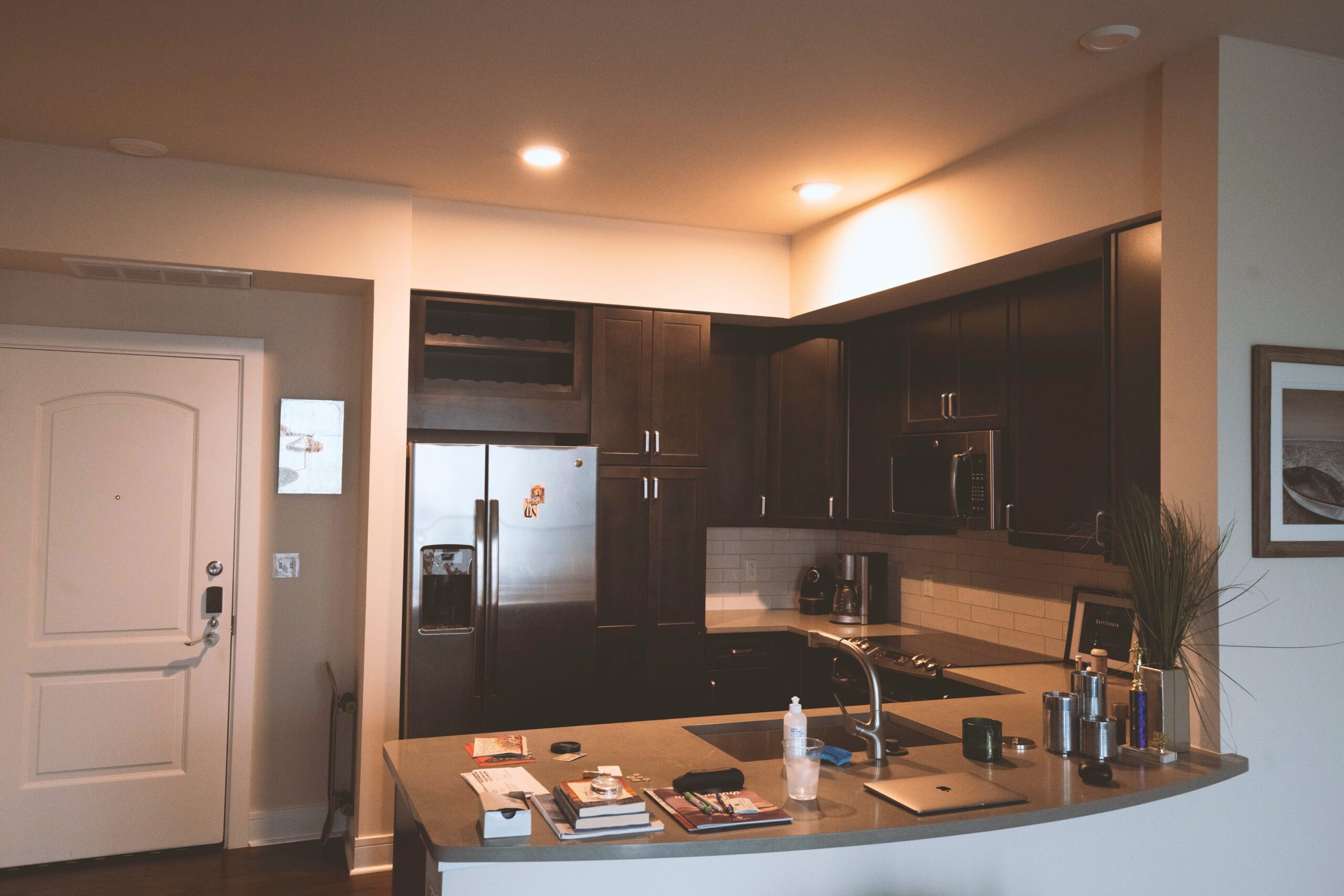
How to Choose the Right Energy-Efficient Light Bulb
1. Understanding the Different Types of Energy-Efficient Light Bulbs
Understanding the various types of energy-efficient light bulbs is essential to making a more sustainable and environmentally conscious choice for your home. Each type offers its unique benefits, and there are several different kinds to choose from. LED bulbs offer superior brightness, whereas CFLs have a longer lifespan and less heat output. Halogen bulbs provide high-quality illumination at an economical price point. Choosing the correct bulb depends on the environment and needs in your space – for example, LED lighting is often preferred for outdoor usage due to its weatherproof qualities, so make sure to consider these things before committing to your bulb.
2. Calculating Your Home’s Energy Consumption
When calculating your home’s energy consumption, every watt counts. Knowing how much energy your home uses is essential in determining how many energy-efficient light bulbs you’ll need and the best types for your needs. It can also help you identify other opportunities to improve energy efficiency throughout the house. Before deciding on the correct type of energy-efficient light bulb, look at your energy bills and relevant room lighting information, including specifics about any existing fixtures or switches. This will allow you to determine which type of light bulb is most suitable for each part of the house while avoiding overspending on unnecessary bulbs.
3. Deciding Between LED, CFL, and Incandescent Bulbs
Choosing between LED, CFL, and Incandescent bulbs is essential regarding energy efficiency. Every type of bulb has its benefits and drawbacks; LEDs and CFLs have more significant energy savings but can require a higher cost upfront, while Incandescent provide a warm glow of light but is less economical in the long run. To ensure you get the best value for your application, weigh up the size of your space, the total cost of ownership, desired quality, and color temperature before deciding. By considering all these factors, you can ensure that you choose the correct energy-efficient light bulb for your needs.
Considerations When Shopping for Energy-Efficient Lighting
Shopping for energy-efficient lighting can be daunting, so it is essential to consider certain factors when selecting. Understanding light bulb labeling is essential for selecting the most efficient option; generally, look for bulbs that have earned an Energy Star Rating from the Environmental Protection Agency. Furthermore, consumers should be aware of the number of lumens produced per watt of electricity used – higher wattage does not automatically equal higher quality or more light output. Additionally, it is always helpful to identify and research what type of bulb best fits a particular use case; different types offer various features, resulting in improved precision and efficiency. Last but not least, allow budget considerations to factor into the decision-making process as well – some bulbs may cost more upfront but save more money over time, thanks to their improved efficiency ratings.
Factors to Think About Before Buying a New Lightbulb
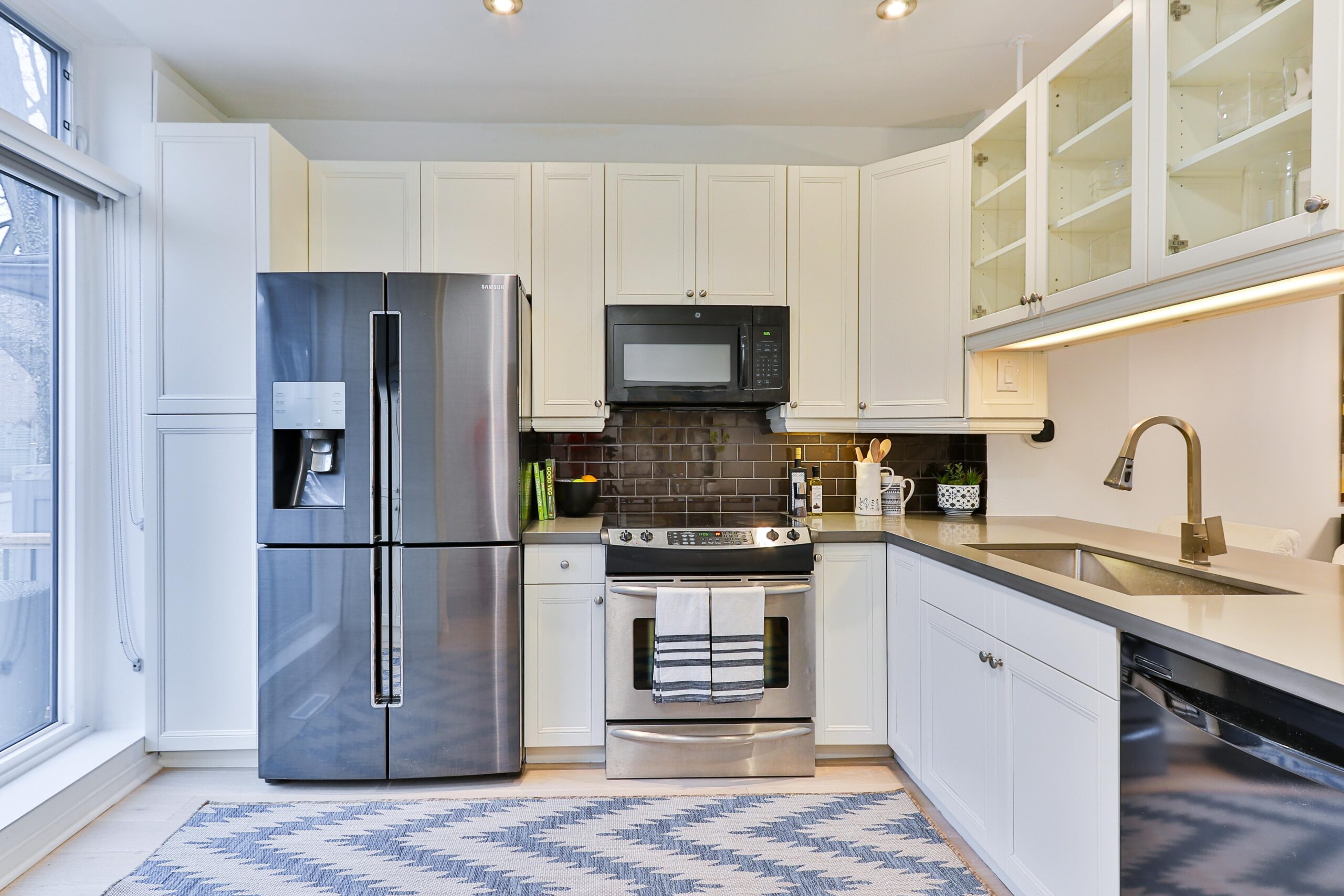
Factors to Think About Before Buying a New Lightbulb
When buying a new lightbulb, there are several important factors to consider to choose the most energy-efficient option. Firstly, it is good to identify which type fits your needs and the socket size you have – common types are compact fluorescent lamps (CFLs), light-emitting diode lamps (LEDs), and halogen incandescent bulbs. Secondly, research the lumens output of each bulb, as this affects the brightness produced by each bulb type. Lastly, take note of the energy rating given, such as A++ or A+, since these indicate how much electricity each bulb uses. Considering all these points, you can make an informed decision when selecting your new bulb and save on energy costs in the long run.
Installation Tips for Optimal Performance and Savings
Installing the correct energy-efficient light bulb is essential to ensuring optimal performance and savings, so take the time to select a bulb that meets your needs. Before purchasing any light bulbs, it is essential to check for local efficiency standards and review ratings of lumens per watt. Once you have the bulb, installation is critical for maximum performance. When installing an energy-efficient bulb, tighten it securely into the fixture and use the manufacturer’s instructions for safe use and handling for optimal results. Lastly, always remember to switch off lights when not in use, as this will save energy and extend the life of your new energy-saving light bulb.
How to Cut Costs When Lighting a Kitchen
Completing a kitchen remodel is exciting – but it can also be expensive. An essential element of your revamp is lighting, which must be practical and fit within your budget. By understanding the principles behind home illumination, you can save money while creating an inviting space to cook and entertain. With this in mind, below, we’ll provide tips on cutting costs when lighting a kitchen without compromising aesthetics or functionality. From planning the arrangement through cost-saving hacks such as DIY installation, you’ll get everything you need for luminous low-cost renovations!
1. Understand the basics of kitchen lighting – which includes task lighting, ambient lighting, and accent lighting.
Kitchen lighting can have a massive impact on the room’s overall feel. When it comes to lighting your kitchen, it is essential to understand the three basics for lighting a kitchen: task, ambient, and accent lighting. Task lighting is often focused on areas such as the counters and sinks, giving those areas extra light for specific functions such as cooking or cleaning. Ambient lighting helps to achieve a certain mood or tone within the kitchen by evenly spreading soft light throughout. Finally, accent lighting is typically placed over cabinets or other architectural elements to draw attention to specific features that may be missed when only natural light is available. These three types of kitchen lighting work together to create an inviting atmosphere that suits both practical needs and aesthetic desires.
2. Invest in energy-efficient light bulbs – this will save you money on electricity bills in the long run.
When it comes to Lighting a Kitchen, investing in energy-efficient light bulbs is a wise decision – not only will they save you money on your electricity bills in the long run, but they also provide superior lighting quality compared to traditional bulbs. Energy-efficient bulbs consume less energy than standard bulbs and, on average, last 25 times longer. This means that over the bulb’s life, you’ll save more money in the form of reduced electric bills – plus, you won’t have to worry about replacing them as frequently. Investing wisely in energy-efficient light bulbs for your kitchen is a surefire way to save on electricity costs.
3. Get creative with natural light – open the curtains to let in more daylight and ensure windows are clean for adequate brightness.
Illuminating your kitchen can be costly, but it doesn’t have to break the bank. Before investing in lighting fixtures, consider leveraging natural light to brighten up this area of your home more cost-effectively. Open up the curtains or blinds to allow in more sunlight during the day and keep an eye out for dust and dirt-blocking light—simple tasks like cleaning windows might shine extra brightness without requiring additional expenditures. Additionally, save money on electricity costs in dark spaces by installing reflective surfaces that bounce natural light throughout your kitchen—this will help create an atmosphere with abundant daylight at no extra cost.
4. Utilize natural materials – like wood and stone, that bring warmth to your kitchen without costing too much.
When it comes to cost-effective lighting in a kitchen, using natural materials is a great option. Wood and stone have the potential to bring a warm, inviting atmosphere to your kitchen without putting a big dent in your budget. A wood ceiling can enhance the cozy feel of your cooking area while also exuding style and sophistication. Additionally, strategically placed stone accents can create a stunning light play that adds texture and variety while bringing that signature natural touch that elevates the character of any space. With creative thinking and suitable materials, you can achieve attractive, inviting kitchen lighting without spending too much money!
5. Incorporating multiple layers of lighting – recessed lights, pendant lights, and wall sconces can provide different brightness levels while saving energy.
When lighting a kitchen, having multiple layers of light can be an efficient and cost-effective way to create the perfect ambiance while conserving energy. Recessed lights provide subtle illumination, and adding pendant lights and wall sconces gives off a more localized light ideal for task illumination and mood setting. Mixing and matching multiple types of overhead lighting with accent lighting helps balance any space’s brightness, giving it the right ambiance for any occasion.
6. Consider LED tape instead of traditional bulbs: LED tape is an affordable way to provide under-cabinet lighting that won’t break the bank.
LED tape is often the most affordable and efficient way to provide quality lighting in any space, including kitchens. Under the cabinet, LED tape not only helps illuminate the workspace but also creates a pleasant ambiance while helping to save energy. Plus, LED tape typically lasts longer and uses less electricity than traditional lighting solutions, making it an ideal option if you’re trying to cut costs and reduce your carbon footprint. With its versatility and efficiency, the LED tape can be a great alternative when looking for effective lighting options that won’t drain your wallet.
Lighting your kitchen can be a formidable task, especially when juggling aesthetics and practicality while staying on budget. With the right know-how, creating the atmosphere, you’re looking for is possible without breaking the bank. Knowing how to use task lighting, ambient lighting, and accent lighting, investing in more efficient bulbs, taking advantage of natural light, utilizing the texture of natural materials like wood or stone in strategic places, and adding multiple layers of traditional types of lights as well as LED tape for under-cabinet lighting are all essential steps to maximize your kitchen’s natural beauty while minimizing costs. By mastering these principles, you’ll have a gorgeously lit space that won’t cost an arm and a leg.
In summary, lighting fixtures for the kitchen can be functional and stylish, depending on your preferences. As you determine which type of lighting fixture works best for your kitchen, don’t forget to consider factors such as placement, light sources, room size, and budget. Ultimately, upgrading your existing fixtures or installing new ones could mean a huge difference in modernizing the look of your space. With the proper lighting setup, you’ll never be lacking in ambiance, no matter what type of cooking style you use. Consider all these tips when it comes time to choose a perfect set of fixtures that accompanies everything from Sunday night dinners to last-minute snacks on the go. No matter what kind of illumination you go within your kitchen – always remember one crucial detail: good lighting makes all food look great!

